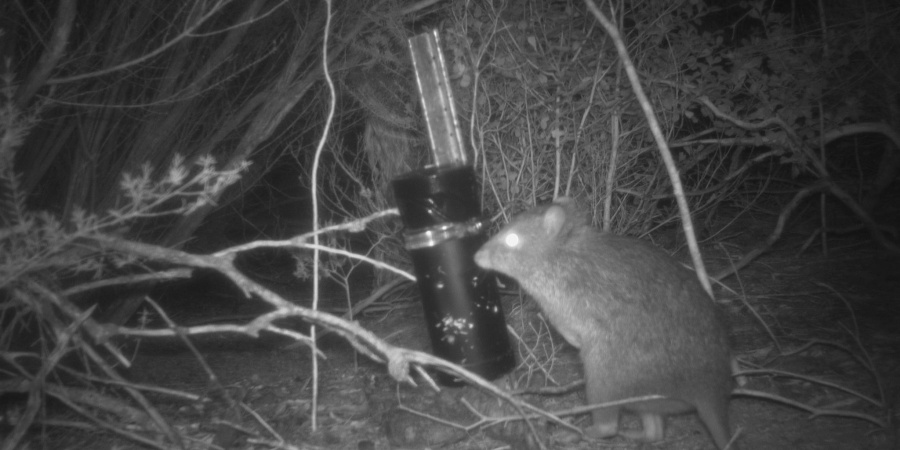
The discovery of two healthy Gilbert’s potoroos, including one with pouch young, at a remote island off Western’s Australia’s south coast has excited Department of Biodiversity, Conservation and Attractions (DBCA) staff and conservation partners working to save the species.
Gilbert’s potoroo is the world’s rarest marsupial. The species had been thought to be extinct since the early 1900s until rediscovered at Two Peoples Bay Nature Reserve on the mainland in 1994.
In 2018, DBCA translocated 10 potoroos to Middle Island after a bushfire impacted 90 per cent of their habitat at Two Peoples Bay.
DBCA’s Regional Ecologist Sarah Comer said an 11-person team, which included Esperance Tjaltjraak rangers and Odonata Foundation staff, spent five days on the island earlier this month preparing and servicing cage and camera traps to monitor potoroos.
“This latest discovery of previously unrecorded animals builds on our research from 2021 that showed translocated potoroos persisting and breeding, with three founders and three new individuals recorded at the time,” she said.
“Both potoroos captured this month were assessed to be in healthy condition and were microchipped before release. “We now have 13 camera traps that will tell us how widespread the potoroos are across the 1080-hectare island. Leaf-litter invertebrate sampling, also undertaken in the recent trip, will determine the Island’s suitability for future translocations of noisy scrub-birds.
“Gilbert’s potoroo and the noisy scrub-bird are both priorities for conservation under the National Threatened Species Action Plan, with the potoroo among the top 21 priority mammals, and the scrub-bird in the top 22 priority birds.”
The recent project work is supported by the WA State Government, Australian Government Saving Native Species Program, National Indigenous Australians Agency, Gilbert’s Potoroo Action Group, Esperance Tjaltjraak Native Title Aboriginal Corporation and South Coast Natural Resource Management.
